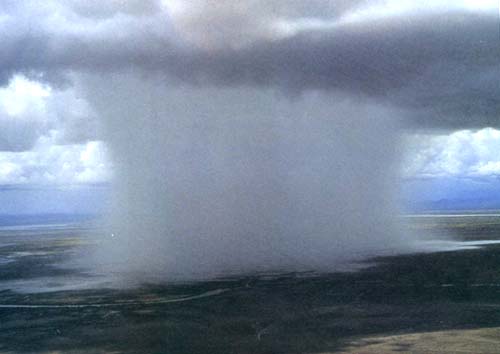Come July in the valley of the sun, we eventually get our monsoon. Now, people unfamiliar with the southwest don’t realize that in the summer, we get the same kind of storms you get in the south pacific, only with a bit of desert twist.
The moisture is imported from Mexico by a change in the winds. Dictionary.com defines monsoon as “any wind that changes directions with the seasons.” That’s a far cry from what most people think of–typhoons.
The intense heat during the day interacts with the moisture and causes a microburst.
The wind blows straight down and forms a haboob, commonly known as a dust storm.
The dust blows across the valley as a wall thousands of feet high. The below picture is from the Arizona Department of Transportation. Imagine being in rush hour traffic when one of these blows through. Haboob is an Arabic word (and guess where a lot of haboobs form).
The rains generally follow the dust and wind. That monsoon rain is often fast and furious, but short-lived. It’s also very spotty. We can be bone dry at the house, but ten miles away there will be flooding.
Phoenix gets a large percentage of our annual 8″ of rain from these monsoons. Lightning can put on an incredible show.
During the 2006 Nebula Awards, we were treated to a pretty good lightning show.
The best part about the monsoon season is the temperature drops to around 105. It makes a difference, even though the humidity goes up. I’ll take that over 115. With a storm coming through, the temperature can drop considerably more.
Unfortunately we’re still looking at 113 degrees tomorrow. The monsoon season has officially been underway since June 15th under the new rules. The old rules were better. We had to post 3 consecutive days of due point at 55 degrees or higher. June 15 is bloody arid and hot. You’ll be lucky to see a cloud, and the only moisture falling from the sky comes from birds.







